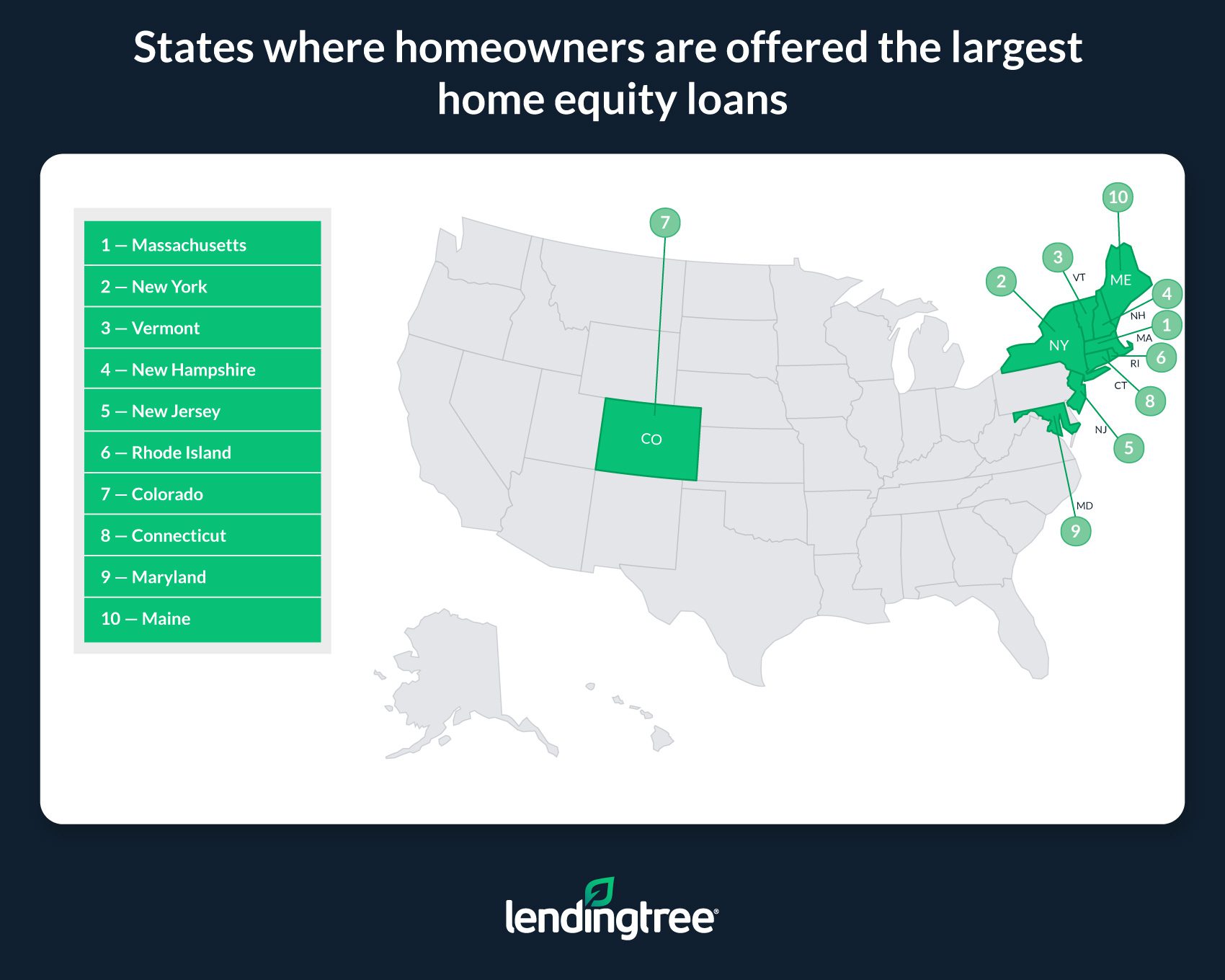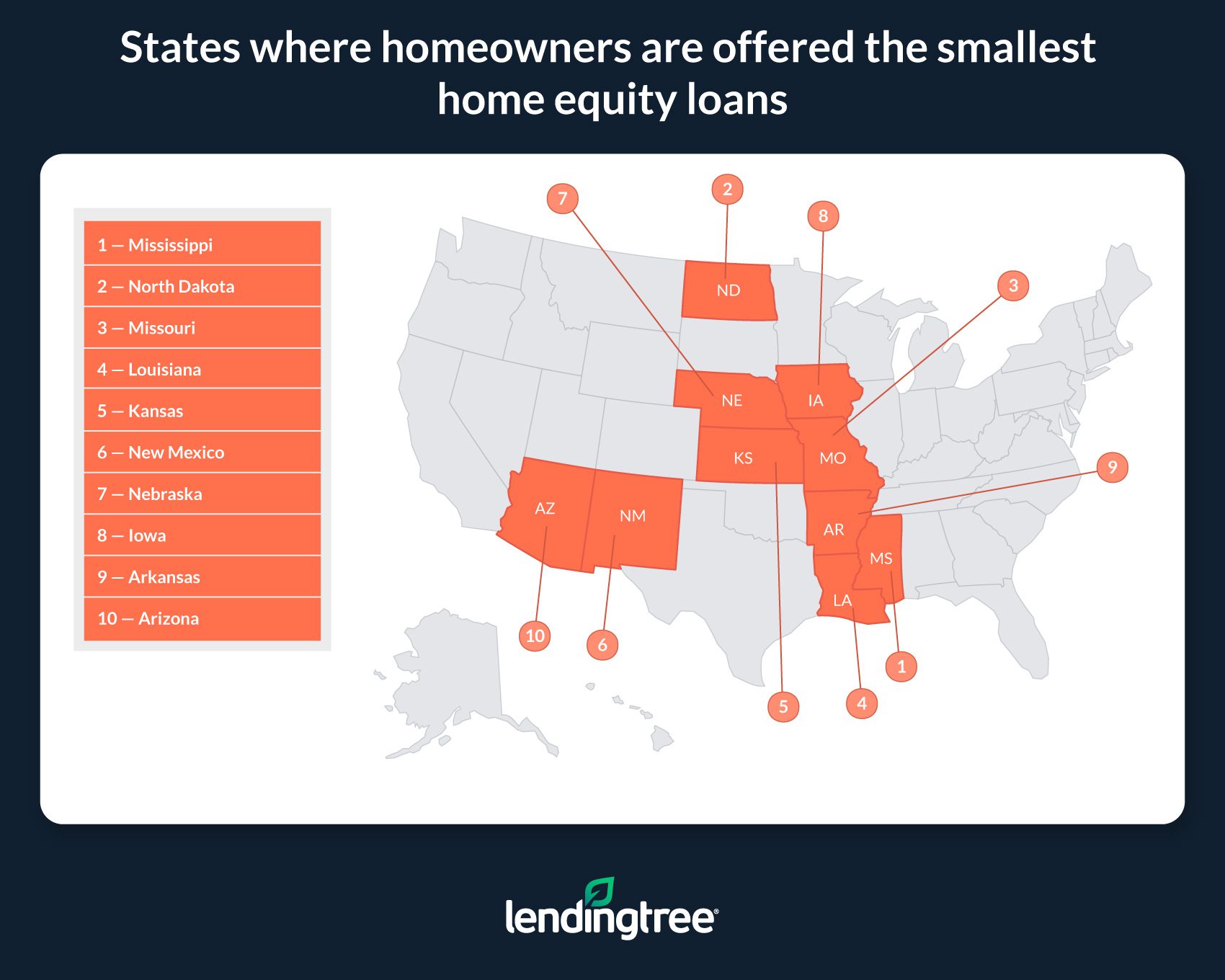Americans Are Sitting on Tens of Trillions of Dollars of Home Equity — Here’s Where Homeowners Are Offered the Largest and Smallest Home Equity Loans
American homeowners are sitting on $28.7 trillion of home equity. That’s significant, even if the amount has fallen from a record $31.8 trillion in the second quarter of 2022. To put that latest figure into perspective, that’s more than $334,000 of equity for each owner-occupied housing unit in the U.S.
While most homeowners are unlikely to have that much value built into their properties, many are nonetheless tapping into the equity they’ve generated through home equity loans. To better understand how much money homeowners are looking to borrow against their equity, LendingTree analyzed more than 580,000 home equity loan offers to users of our online loan shopping platform from Jan. 1 through July 31, 2023.
We found that the average size of a home equity loan offer is $75,000 or higher in each of the nation’s 50 states.
On this page
Key findings
- Across the nation’s 50 states, the average home equity loan amount offered to homeowners is $104,102. Though the 50-state average is six figures, not all homeowners are offered such large loans. In fact, loan amounts can vary by tens of thousands of dollars by state. For example, the average offered home equity loan amount in Massachusetts of $145,788 is nearly double the average amount offered to borrowers in Mississippi ($75,228).
- Massachusetts, New York and Vermont homeowners are offered the largest average home equity loans. In Massachusetts, home equity loan borrowers are offered an average of $145,788. That’s followed by $141,951 in New York and $135,170 in Vermont.
- On average, Mississippi, North Dakota and Missouri borrowers receive the smallest home equity loan offers. In Mississippi, the average home equity loan amount offered is $75,228. Loan offers are comparable in North Dakota and Missouri at $75,514 and $76,791, respectively.
- Average offered interest rates on home equity loans can fluctuate notably by state. For example, the average rate of 9.88% offered to borrowers in Iowa — the highest in the nation — is 2 percentage points higher than the average rate of 7.88% offered in Maryland — the lowest in the nation.
- Like rates and loan amounts, monthly home equity loan payments differ widely by state. The highest average payment in the nation is in Hawaii, where home equity loan offers would cost borrowers an average of $1,192 a month. Meanwhile, Iowans’ average home equity loan payment would be $604 a month — the lowest in the nation. Average payments offered differ so much due to varying rates and loan amounts.
States where homeowners are offered the largest home equity loans
1. Massachusetts
- Average offered home equity loan amount: $145,788
- Average offered home equity loan interest rate: 8.15%
- Average offered home equity loan monthly payment: $1,014
2. New York
- Average offered home equity loan amount: $141,951
- Average offered home equity loan interest rate: 8.47%
- Average offered home equity loan monthly payment: $1,031
3. Vermont
- Average offered home equity loan amount: $135,170
- Average offered home equity loan interest rate: 8.41%
- Average offered home equity loan monthly payment: $967

States where homeowners are offered the smallest home equity loans
1. Mississippi
- Average offered home equity loan amount: $75,228
- Average offered home equity loan interest rate: 9.53%
- Average offered home equity loan monthly payment: $801
2. North Dakota
- Average offered home equity loan amount: $75,514
- Average offered home equity loan interest rate: 9.80%
- Average offered home equity loan monthly payment: $810
3. Missouri
- Average offered home equity loan amount: $76,791
- Average offered home equity loan interest rate: 9.07%
- Average offered home equity loan monthly payment: $737

Increased home equity is a tangible benefit of high home prices
While getting into the real estate market can be challenging when home prices are as steep as now, that doesn’t mean high home values are terrible news. In fact, today’s persistently hot prices can be good for current homeowners.
This is because homeowners generate home equity when the value of their property increases above the value of what they owe on their mortgage and other loans secured by their house. If property values rise dramatically — as they have relative to where they were at the start of the pandemic — homeowners can generate a significant amount of home equity, even if they haven’t paid off much of their mortgage.
Though today’s persistently high home prices are, in many ways, a cause for concern that should be addressed, the high amounts of home equity that many Americans are sitting on as a result of price growth over the past few years is a positive worth recognizing.
Tips for tapping into your home’s equity
Those thinking they want a home equity loan should consider the following tips before applying:
- Shop around for a lender. Different lenders can offer different rates to the same borrowers. As a result, the first lender a person goes to might not be the lender who can offer them the best rate on a loan. This means that borrowers should shop around and compare rates from different lenders to increase their chances of getting the lowest possible rate on their home equity loan.
- Consider different types of loans. While a standard home equity loan can be a good option for someone in need of cash, other types of loans like a HELOC — where borrowers are given access to a revolving line of credit that they can borrow from as needed instead of getting a lump sum of cash — are worth considering. Depending on the loan’s purpose, a personal or small business loan might also be worth considering.
- Don’t bite off more than you can chew. Even if you have a significant amount of equity built into your home, you shouldn’t rush into getting a home equity loan. If you’re in a situation where you’re having trouble keeping up with your other debts or where you don’t have a stable income stream, rushing to get a new loan might not be the best idea. In a worst-case scenario, defaulting on a home equity loan can result in your home being foreclosed.
Methodology
LendingTree analyzed 580,298 home equity loans offered to users of the LendingTree platform across the nation’s 50 states from Jan. 1 through July 31, 2023.
This study looked exclusively at home equity loans and not home equity lines of credit (HELOCs). This was done because HELOCs typically have adjustable interest rates, while home equity loans usually have fixed interest rates. Because of this, including HELOCs — specifically for our average interest rate and monthly payment calculations — could have significantly skewed our findings.


